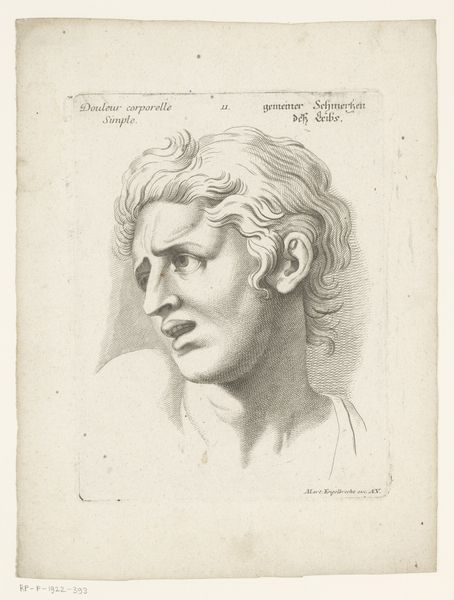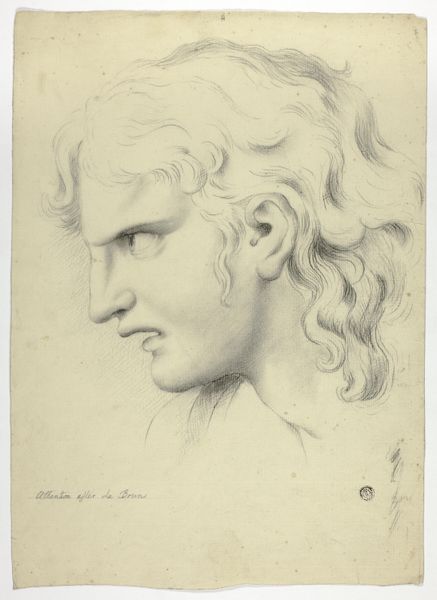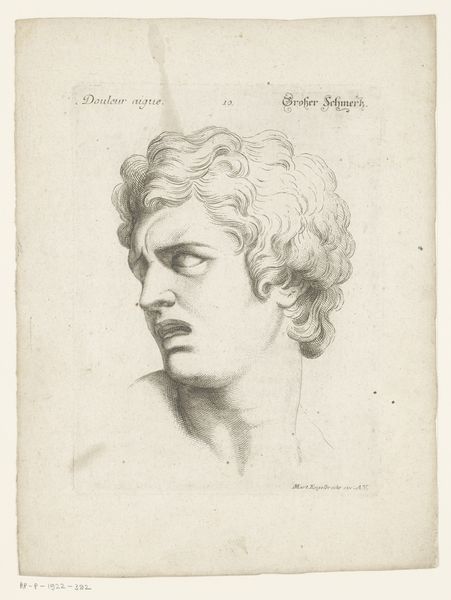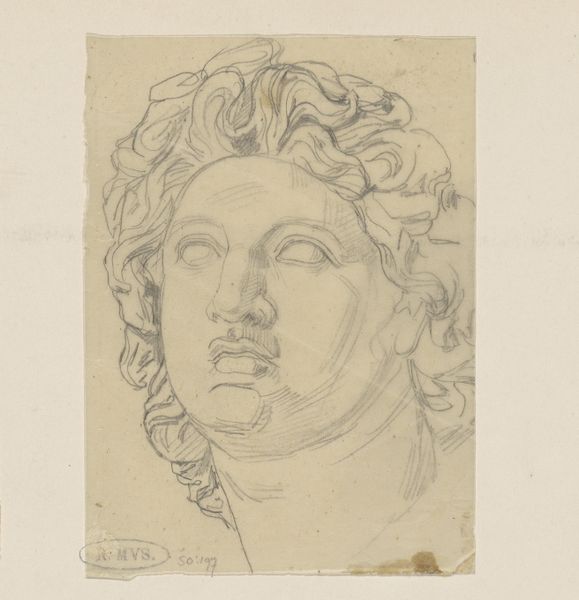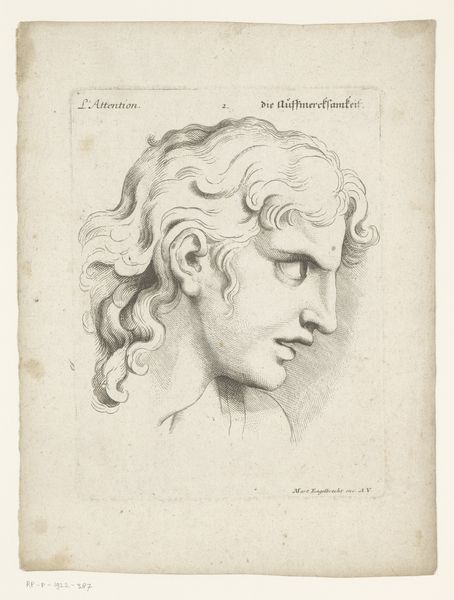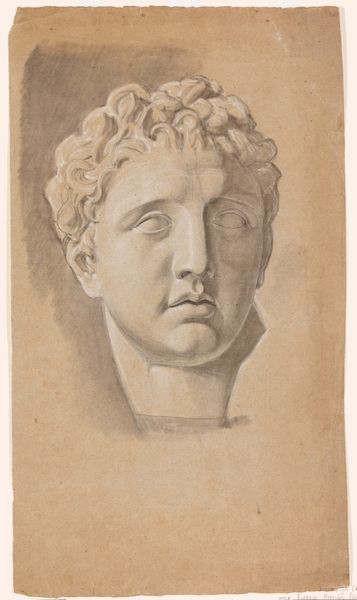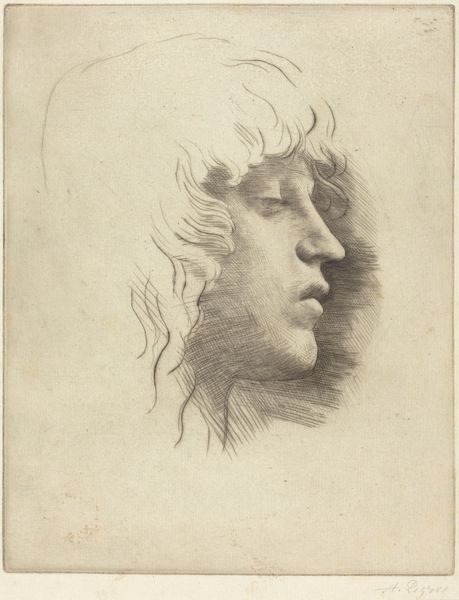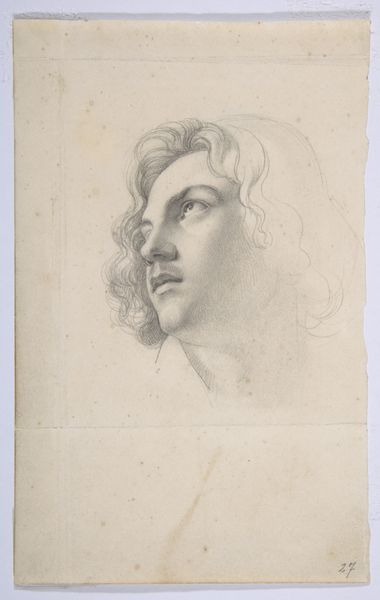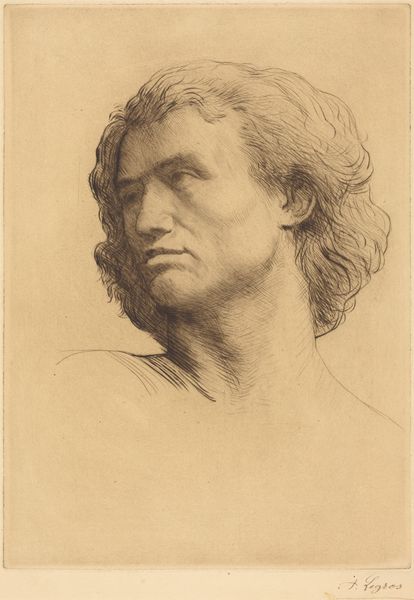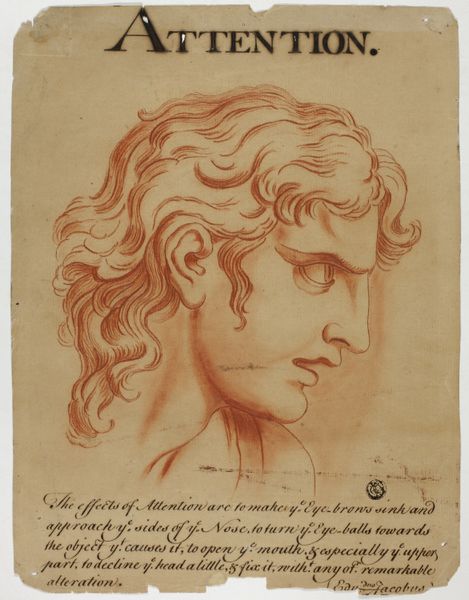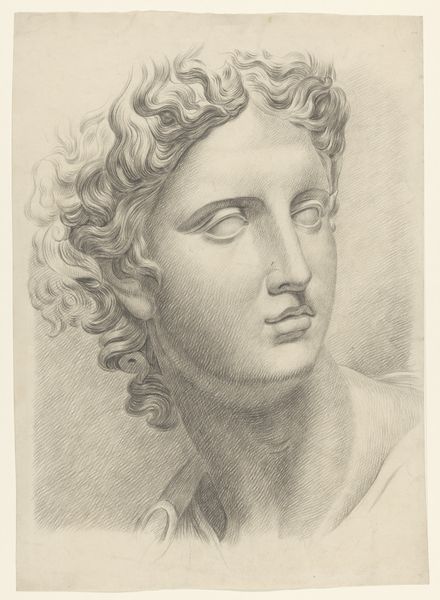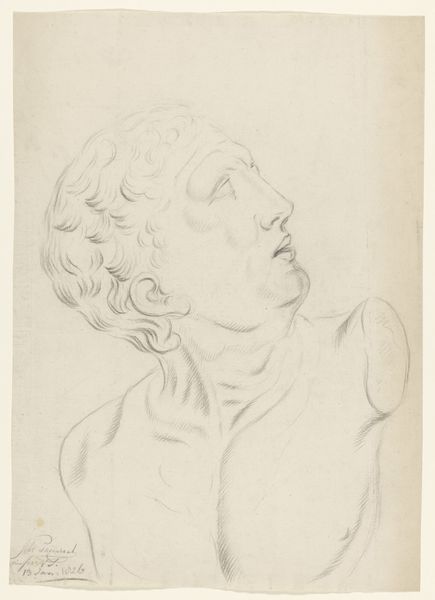
drawing, paper, pencil, chalk, charcoal
#
portrait
#
drawing
#
classical-realism
#
charcoal drawing
#
paper
#
pencil drawing
#
ancient-mediterranean
#
pencil
#
chalk
#
portrait drawing
#
charcoal
#
history-painting
Dimensions: 497 × 357 mm
Copyright: Public Domain
Curator: Here we have a drawing titled "Head of Nero in the British Museum," the artist is Benjamin Robert Haydon. It’s done with pencil, chalk, and charcoal on paper. Editor: There's a striking stillness. The shadows around the eyes are almost oppressive, aren’t they? The head itself seems monumental, even though the medium is quite delicate. Curator: The choice of Nero is quite fascinating. Nero, known for his tyrannical rule, often evokes discussions around power, abuse, and legacy. His image carries significant political weight. Editor: Indeed. And considering the historical context of Haydon, situating this work becomes all the more intriguing. The British Museum, as a repository of artifacts of empire, is implicitly involved in defining the West's gaze upon Antiquity. Haydon reproduces, thus participating in the production of what Rome should mean for his contemporaries. What do we read in this copy, that the original already made canonical? Curator: As a British artist studying classical sculptures, the decision to portray Nero speaks to a dialogue around empire, representation, and cultural identity. The act of drawing is then more than mere replication; it's an interpretation shaped by socio-political agendas. Haydon attempts to appropriate and, therefore, critique or even legitimise the Empire’s role. Editor: Do you feel that the soft rendering softens his historically recognized cruelty, thus attempting to portray him in a way that justifies him, even in the slightest manner? How far does artistic licence extend into the manipulation of narratives? Curator: That's a sharp question! The romanticism inherent in such classical-realist portraiture, certainly veils aspects of his rule. Haydon engages in an aesthetic operation. Editor: Precisely, aesthetic operations like this deserve a broader analysis to ensure historical figures aren’t stripped bare from the consequences of their actions and, again, how those are re-interpreted generation after generation. Curator: This dialogue underlines the vital role of institutions, like this museum, in influencing cultural memory, doesn't it? Editor: Absolutely. This piece reminds us of the responsibility we have to critically engage with the narratives museums present, considering how they shape our perception of history and power.
Comments
No comments
Be the first to comment and join the conversation on the ultimate creative platform.
